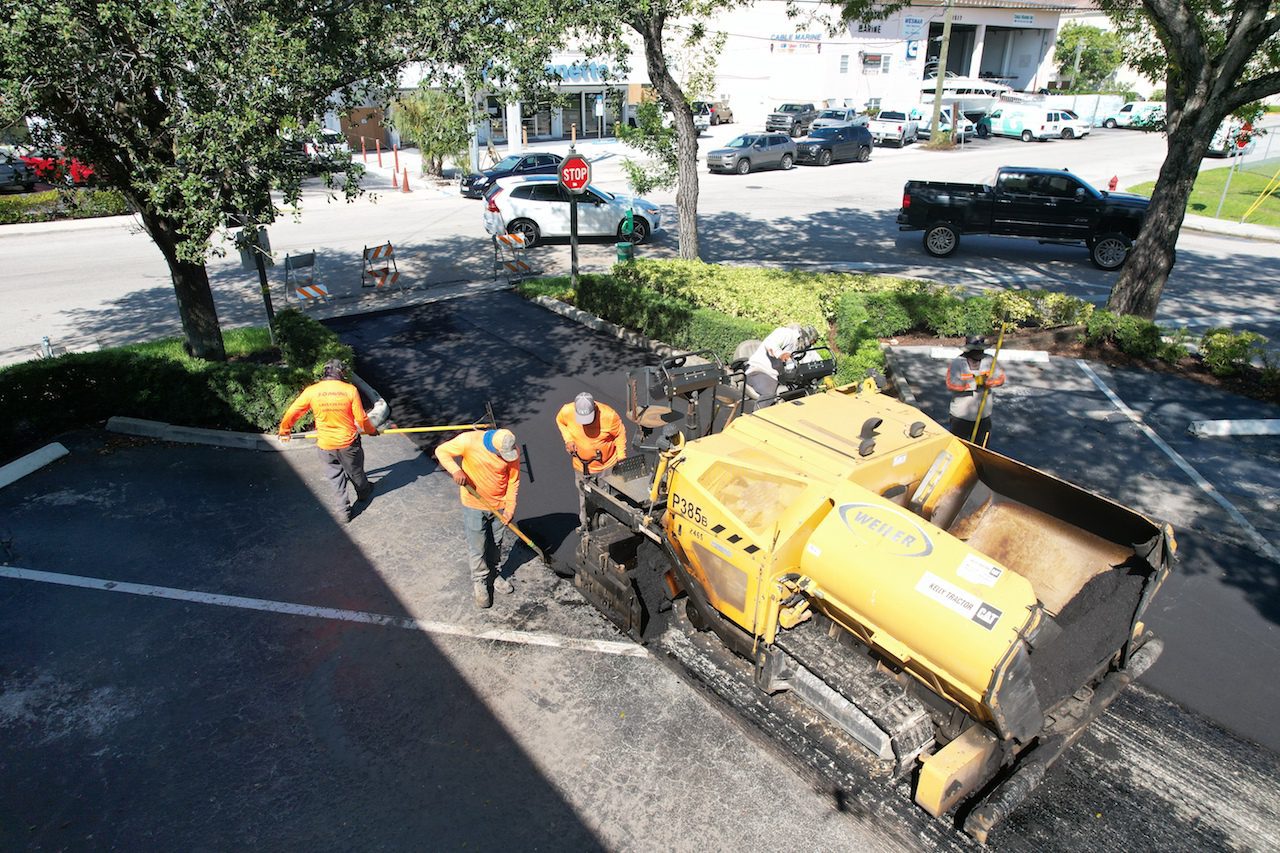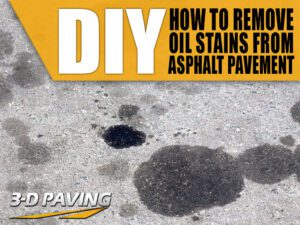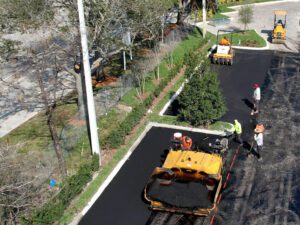 When installing asphalt paving, contractors must execute a number of steps in a precise order if the new pavement is to be long-lasting, visually appealing, and safe. Asphalt pavement construction involves a mixture of science, engineering, creativity, and experience, but it also involves a great many terms that people who are not in the paving industry may not understand. Sometimes, the words or phrases used by contractors may be familiar, but they do not mean the same to a paving contractor as they mean in other contexts. Two such words are binder and topcoat, but their explanation requires a brief discussion on how asphalt pavements are built.
When installing asphalt paving, contractors must execute a number of steps in a precise order if the new pavement is to be long-lasting, visually appealing, and safe. Asphalt pavement construction involves a mixture of science, engineering, creativity, and experience, but it also involves a great many terms that people who are not in the paving industry may not understand. Sometimes, the words or phrases used by contractors may be familiar, but they do not mean the same to a paving contractor as they mean in other contexts. Two such words are binder and topcoat, but their explanation requires a brief discussion on how asphalt pavements are built.
How Is Asphalt Paving Installed?
Paving contractors start by designing a pavement that will have the strength to support the number and weight of the vehicles that will have access to it. This design specifies how deep the base and the asphalt will need to be. If either is too shallow, the pavement can fail quickly, but the customer’s cost will be more than it should be if the design calls for an excessive depth. On municipality paving projects, the city engineer may provide detailed specifications that include the requirements for the asphalt and base layers, but on commercial paving projects, it is usually the contractor who generates the specifications. Normally, as part of the design phase, the contractor will evaluate the suitability of the soil at the building site. Poor soil may need to be amended, which means that layers of soil are peeled off and replaced with soil that is more suitable. The soil is compacted, and then the paving company constructs and compacts an aggregate base. This will be followed by multiple layers of asphalt, but not until the binder is installed.
What Is an Asphalt Paving Binder?
The binder, which is sometimes referred to as the base coat, is a course of hot mix asphalt and aggregate that a road or parking lot paving company installs over the base. Because the binder is a load-bearing course, it must be strong, but it must also be flexible so that they can withstand repeated cycles of freezing and thawing over many years. The thickness of the binder is part of the pavement design.
After Installing the Binder, What Does an Asphalt Company Do Next?
After placing the binder, the contractor installs the hot mix asphalt. Multiple layers will be installed and compacted until the total asphalt depth specified in the design plan is achieved. At this point, it is time to install the topcoat.
What Is a Topcoat to an Asphalt Contractor?
The topcoat is the last layer of asphalt to be installed, so it is the layer on which vehicles will drive or people will walk. It is sometimes called the surface course. Because the surface course needs to be smooth, paving contractors typically use smaller aggregate in the asphalt mix than they use for the load-bearing courses.
If You Have More Questions, Contact 3-D Paving for Expert Answers
Whether you need an asphalt overlay, thermoplastic markings, concrete paving, or other concrete or asphalt paving services, 3-D Paving has a staff of experienced experts ready to assist you. Our services include asphalt repair and paving, asphalt milling, sealcoating, asphalt resurfacing, painted and thermoplastic pavement markings, concrete flatwork, paver bricks, parking lot signs, speed bumps, ADA compliance, drainage repairs, parking lot striping, site development, and concrete grinding. We serve clients in a wide variety of industries throughout South Florida. We have an exemplary reputation for reliability, craftsmanship, integrity, and customer service. It is easy to request a free quote; just submit the online form, call 855-735-7623, or email Info@3-DPaving.com.







